Rokugo Manzan Pilgrimage and Rituals
Date: approximately once every 10 years in spring
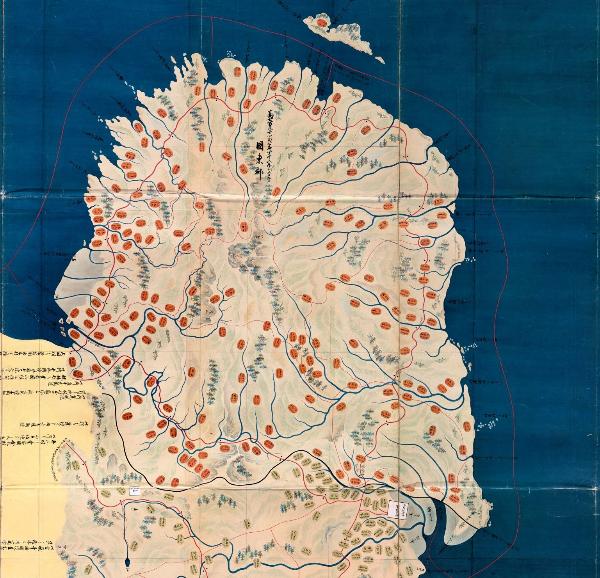
Kunisaki Peninsula on the map of Bungo Province (1830s)
The Kunisaki Peninsula east of Usa is the home of the Rokugo Manzan, a group of Tendai school Buddhist temples spread across the mountains of the region. According to legend, a mountain ascetic called Ninmon brought a syncretic form of Shinto and Buddhist worship from Usa to Kunisaki in 718, founding 28 temples and carving 69,000 statues during the decades he spent there. Ninmon was believed to be an incarnation of the deity Hachiman and reportedly appeared again in 855 to lay out two routes through the mountains for those who wished to undertake the same ascetic training he had. Over time, these routes became known as the Rokugo Manzan Pilgrimage.
Rituals of Preparation
The pilgrimage (called mineiri, or “entering the mountain”) is preceded by a series of rituals asking for divine blessing on the journey. Participants clad in white to symbolize a purified mind and body assemble on Mt. Omoto, which is considered sacred as the place where the deity Hachiman descended to Earth. Together with Tendai Buddhist monks and Shinto priests from Usa Jingu Shrine, the participants offer prayers, chant sutras, and burn wooden goma prayer sticks.
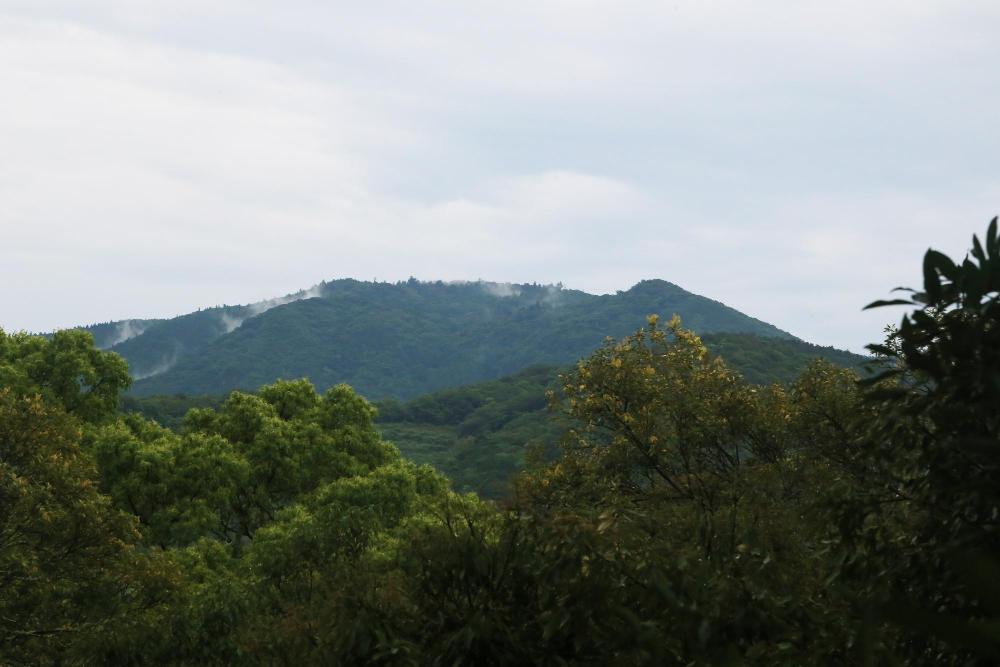
Mt. Omoto
After the group descends the mountain, they proceed to the Jogu (Upper Shrine) of Usa Jingu. The ceremonial greeting between the Shinto priests and Buddhist pilgrims in front of the vermilion shrine buildings is an iconic image evoking the days when Usa Jingu was a syncretic shrine-temple complex. The pilgrims pay respects to the deities and conduct another goma fire ritual on the shrine grounds.
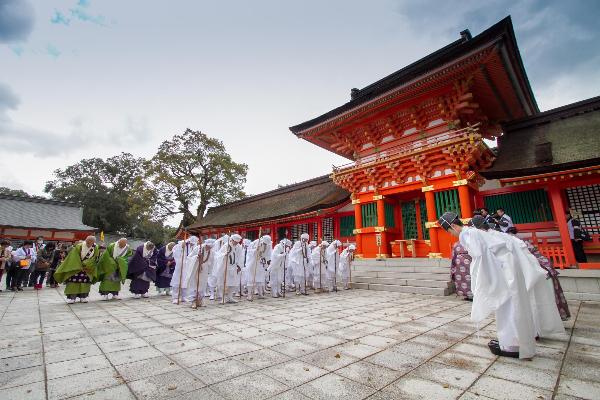
Ceremonial greeting at the Jogu (Upper Shrine)
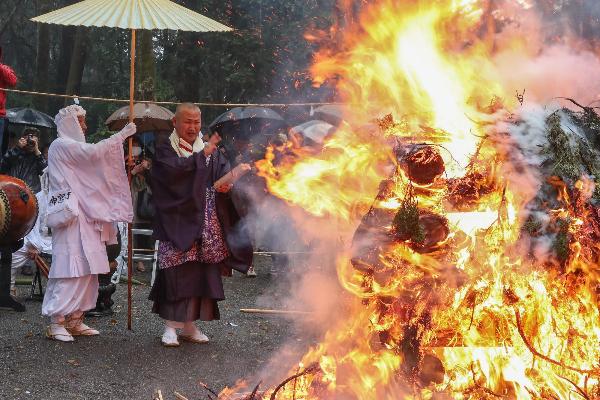
Goma fire ritual on Usa Jingu shrine grounds
From Usa Jingu the participants head toward the Kunisaki Peninsula. The next morning, a special “commencement” fire ritual is held in front of two large Buddhist images known as Kumano Magaibutsu carved into the face of a cliff. When the ritual is complete, the Rokugo Manzan Pilgrimage officially begins.
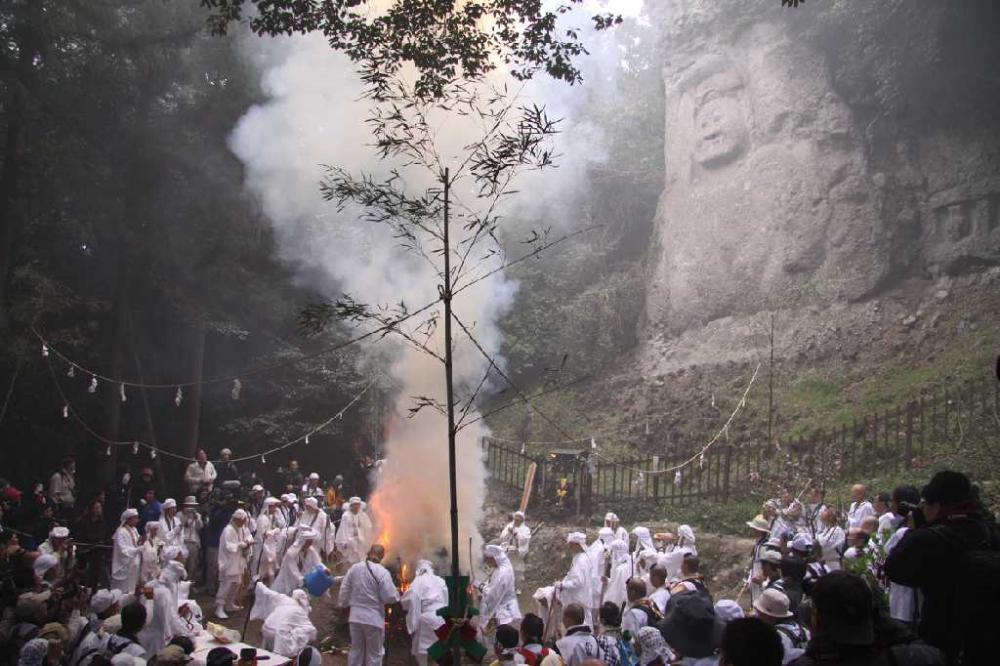
Goma fire ritual in front of the Kumano Magaibutsu Buddhist images
Embarking on the Pilgrimage
The route covers over 160 kilometers and 183 sacred spots, including temples, statues carved into cliffs, distinctive rocks, and caves. Participants repeatedly purify their bodies, chant sutras, and perform various physical challenges along the way. Some of the practices include throwing evergreen branches from a high mountaintop, jumping down from large boulders, crossing a narrow stone bridge over a deep gorge, and taking part in faith healing rituals.
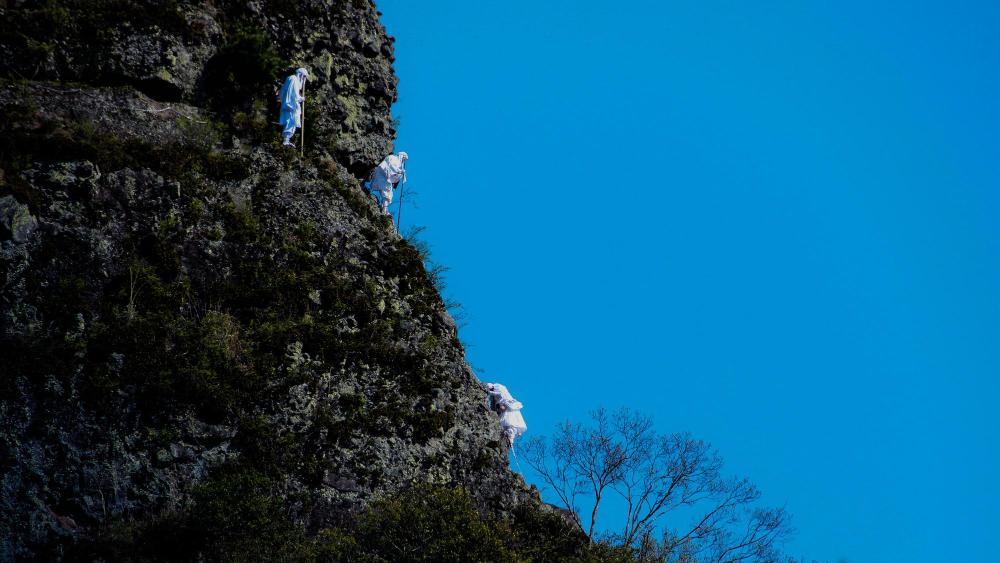
Pilgrims descending the steep mountainside
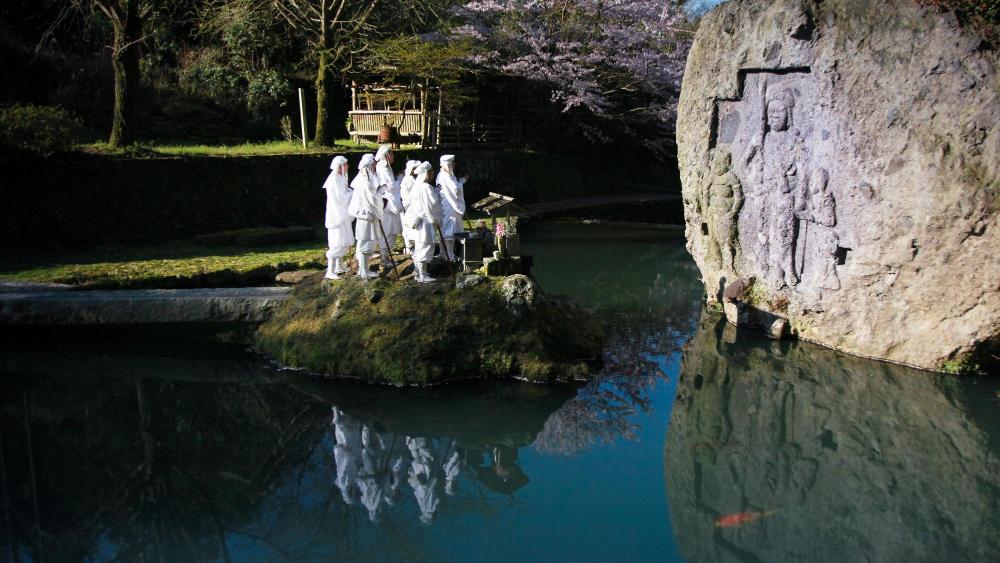
Praying before the Kawanaka Fudo rock carving of Buddhist deities
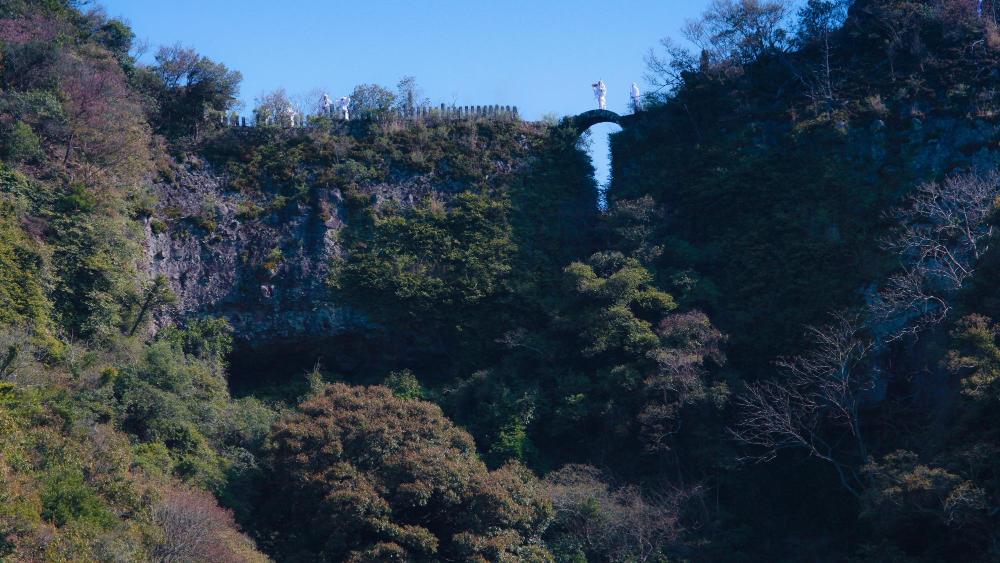
Crossing Mumyobashi Bridge
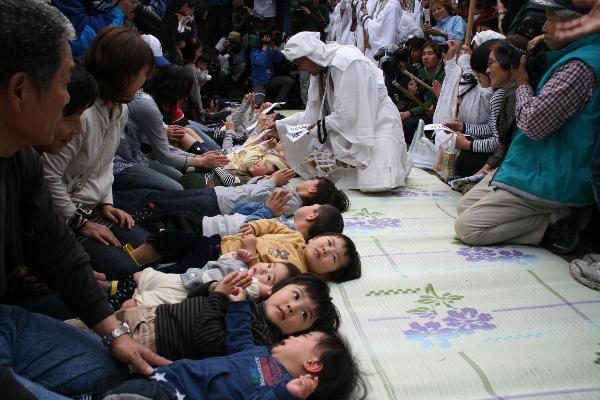
Performing a ritual to ward off illness
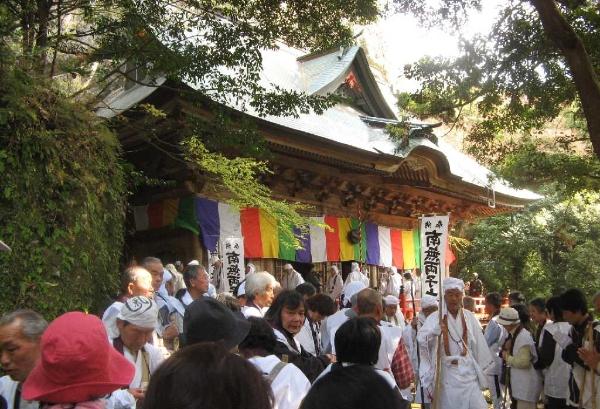
Visiting Futagoji Temple
In the late Edo period (1603–1867), it became custom to undertake the Rokugo Manzan Pilgrimage as a group, which is how it is practiced today. At the peak of popularity, the route encompassed about 65 temples that were categorized by purpose: temples for religious studies, for ascetic training, and for propagating Buddhism. However, the government-ordered separation of Shinto and Buddhism in the Meiji era (1868–1912) greatly reduced the number of participants, and the pilgrimage did not take place for decades. The tradition was revived in 1959, and the Rokugo Manzan Pilgrimage is now held approximately every 10 years. Most recently it took place in 2018, celebrating 1,300 years of history.
Photos courtesy of: National Archives of Japan, Usa and Kunisaki Peninsula Travel Society, Kunisaki Peninsula, Usa Region, and Rokugo Manzan Tourism Promotion Council, Oita Prefectural History Museum, Usa City Board of Education

This English-language text was created by Japan Tourism Agency.
この記事に関するお問い合わせ先
都市計画課 景観・公園整備係
〒879-0492 大分県宇佐市大字上田1030番地の1 本庁舎2階
電話番号:0978-27-8181
ファックス:0978-32-2331
メールフォームによるお問い合わせ
- ページに関する評価
-





更新日:2024年03月18日